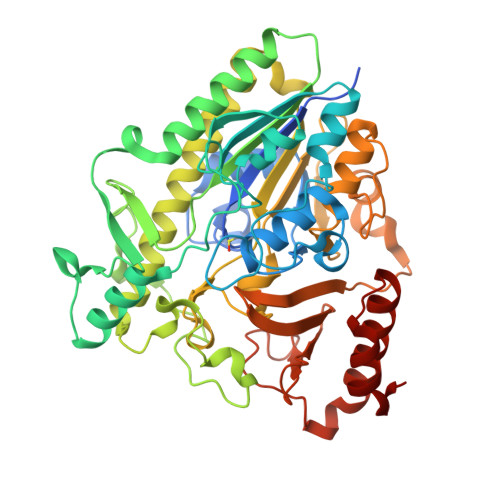Insights into the kappa / iota-carrageenan metabolism pathway of some marinePseudoalteromonasspecies.
Hettle, A.G., Hobbs, J.K., Pluvinage, B., Vickers, C., Abe, K.T., Salama-Alber, O., McGuire, B.E., Hehemann, J.H., Hui, J.P.M., Berrue, F., Banskota, A., Zhang, J., Bottos, E.M., Van Hamme, J., Boraston, A.B.(2019) Commun Biol 2: 474-474
- PubMed: 31886414
- DOI: https://doi.org/10.1038/s42003-019-0721-y
- Primary Citation of Related Structures:
6PNU, 6POP, 6PRM, 6PSM, 6PSO, 6PT4, 6PT6, 6PT9, 6PTK, 6PTM - PubMed Abstract:
Pseudoalteromonas is a globally distributed marine-associated genus that can be found in a broad range of aquatic environments, including in association with macroalgal surfaces where they may take advantage of these rich sources of polysaccharides. The metabolic systems that confer the ability to metabolize this abundant form of photosynthetically fixed carbon, however, are not yet fully understood. Through genomics, transcriptomics, microbiology, and specific structure-function studies of pathway components we address the capacity of newly isolated marine pseudoalteromonads to metabolize the red algal galactan carrageenan. The results reveal that the κ/ι-carrageenan specific polysaccharide utilization locus (CarPUL) enables isolates possessing this locus the ability to grow on this substrate. Biochemical and structural analysis of the enzymatic components of the CarPUL promoted the development of a detailed model of the κ/ι-carrageenan metabolic pathway deployed by pseudoalteromonads, thus furthering our understanding of how these microbes have adapted to a unique environmental niche.
- 1Department of Biochemistry and Microbiology, University of Victoria, PO Box 1700 STN CSC, Victoria, British Columbia V8W 2Y2 Canada.
Organizational Affiliation:




















